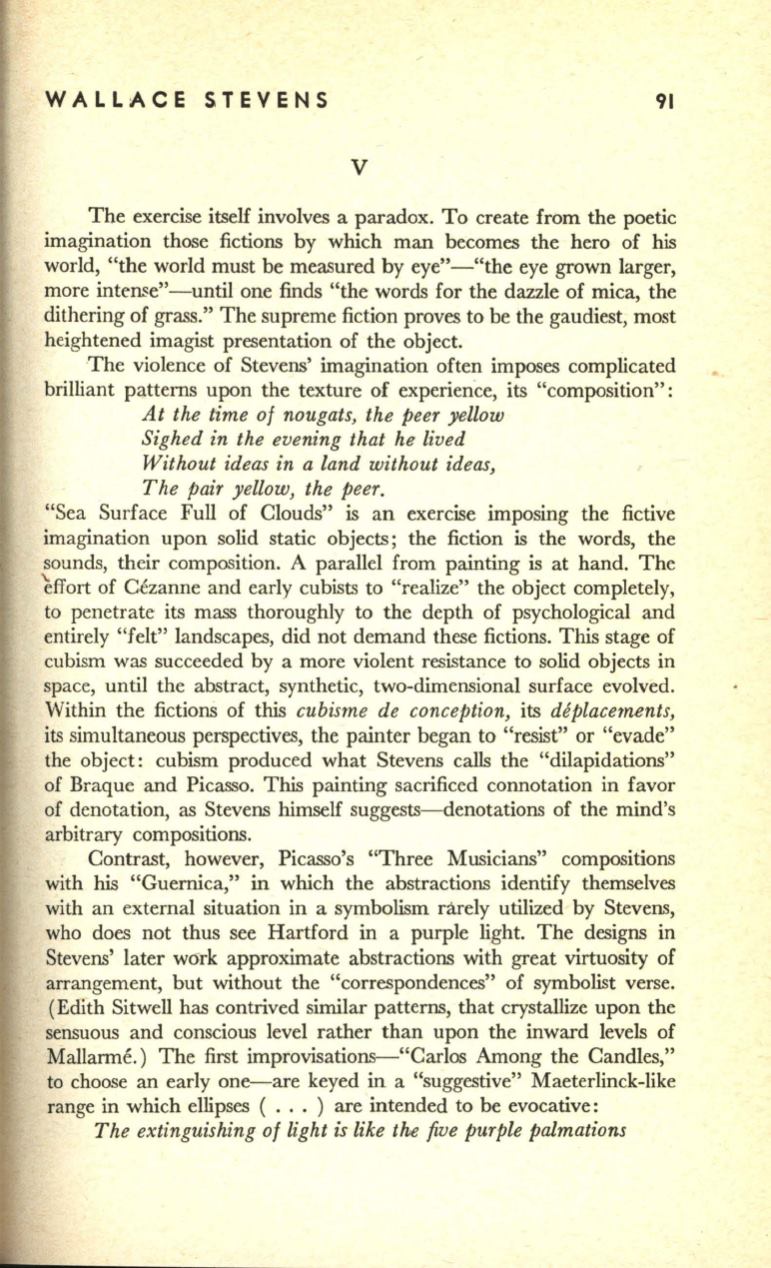
WALLACE STEVENS
91
v
The exercise itself involves a paradox. To create from the poetic
imagination those fictions by which man becomes the hero of his
world, "the world must be measured by eye"-"the eye grown larger,
more intense"-until one finds "the words for the dazzle of mica, the
dithering of grass." The supreme fiction proves to be the gaudiest, most
heightened imagist presentation of the object.
The violence of Stevens' imagination often imposes complicated
brilliant patterns upon the texture of experience, its "composition":
At the time of nougats, the peer yellow
Sighed in the evening that he lived
Without ideas in a land without ideas,
The pair yellow, the peer.
"Sea Surface Full of Clouds" is an exercise imposing the fictive
imagination upon solid static objects; the fiction is the words, the
sounds, their composition. A parallel from painting is at hand. The
~ffort
of Cezanne and early cubists to "realize" the object completely,
to penetrate its mass thoroughly to the depth of psychological and
entirely "felt" landscapes, did not demand these fictions. This stage of
cubism was succeeded by a more violent resistance to solid objects in
space, until the abstract, synthetic, two-dimensional surface evolved.
Within the fictionS of this
cubisme de conception,
its
deplacernents,
its simultaneous perspectives, the painter began to "resist" or "evade"
the object: cubism produced what Stevens calls the "dilapidations"
of Braque and Picasso. This painting sacrificed connotation in favor
of denotation, as Stevens himself suggests-denotations of the mind's
arbitrary compositions.
Contrast, however, Picasso's "Three Musicians" compositions
with his "Guernica," in which the abstractions identify themselves
with an external situation in a symbolism rarely utilized by Stevens,
who does not thus see Hartford in a purple light. The designs in
Stevens' later work approximate abstractions with great virtuosity of
arrangement, but without the "correspondences" of symbolist verse.
(Edith Sitwell has contrived similar patterns, that crystallize upon the
sensuous and conscious level rather than upon the inward levels of
Mallarme.) The first improvisations-"Carlos Among the Candles,"
to choose an early one- are keyed
in
a "suggestive" Maeterlinck-like
range in which ellipses ( ... ) are intended to be evocative:
The extinguishing of light is like the five purple palmations


